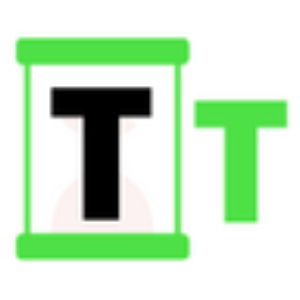Why Is The Invesco Galaxy Bitcoin ETF Lagging Peers?
5 min read
Summary The Invesco Galaxy Bitcoin ETF (BTCO) has lagged peers in AUM growth and even has negative year to date BTC supply held through the fund. iShares dominates US Bitcoin ETF flows, capturing the vast majority of new investment and leaving little market share for smaller funds like BTCO. BTCO’s 0.25% expense ratio is less competitive versus some peers, and its higher post-waiver fee at launch likely deterred long-term investors. Despite its small size, BTCO functions effectively as a Bitcoin ETF proxy, but cheaper and more established alternatives remain more attractive for most investors. With Bitcoin ( BTC-USD ) getting increasingly gobbled up by the iShares Bitcoin ETF ( IBIT ) and Bitcoin Treasury companies like Strategy ( MSTR )( STRF ), not every US-listed Bitcoin ETF has benefited from the same type of inflows as the market leader. In this article, we’ll look at the Invesco Galaxy Bitcoin ETF ( BTCO ) relative to peers. 12 Month Holdings Trend, BTCO (TheBlock) The fund’s BTC holdings have fallen year to date while the broader US-based Bitcoin ETF segment has seen year to date inflows of over 21% measured in BTC. Is there a reason why the fund has lagged the rest of the market in AUM growth over the last 6 months? I think yes. Bitcoin Capital Flows and Provider AUM As of June 27th, the capital flow story for Bitcoin continues to be incredibly impressive in 2025. As of article submission, the digital asset sector is working on 11 consecutive weeks of positive net flows into investment products. Bitcoin’s month to date investment product net flow as of June 27th was $4.6 billion. Year date net flow came in at nearly $15 million through the first half of 2025: Asset (mil$) MTD Flows YTD Flows AUM Bitcoin $4,604 $14,925 $159,399 Ethereum ( ETH-USD ) $1,432 $2,859 $14,614 Multi-asset -$17.3 $58 $6,814 Solana ( SOL-USD ) $8.3 $91 $1,328 XRP ( XRP-USD ) $21.2 $219 $1,184 Total $6,059 $17,776 $184,414 BTC Dominance 76.0% 84.0% 86.4% Bitcoin is clearly benefiting from demand through capital flows with 76% of digital asset net flow month to date and 84% share year to date. These are impressive numbers. It isn’t just a Bitcoin story though, this is very much a BlackRock ( BLK ) story as well. When we break down the capital flows by provider, it’s quite clear there is a dominant product provider in the market. The iShares funds account for 77% of the month to date flows and a staggering 96% of digital asset investment demand year to date. Provider (mil$) MTD Flows YTD Flows AUM iShares $4,651 $17,053 $78,605 Grayscale $74 -$1,652 $29,892 Fidelity $355 $249 $21,516 ARK 21 Shrs $97 $75 $5,018 Bitwise $227 -$59 $4,511 ProShares $90 $526 $4,101 21Shares AG $18 -$200 $3,750 CoinShares XBT -$57 -$269 $3,446 Other $605 $2,055 $33,575 Total $6,059 $17,776 $184,414 Source: CoinShares/Bloomberg, as of June 27th, 2025 Invesco’s share of the digital asset investment space is so small that CoinShares doesn’t even break it out in the company’s digital asset fund flow reports. When we assess BTC AUM as a percent of total issuer AUM, Invesco’s Bitcoin holdings are a rounding error while iShares has 1% of total AUM in Bitcoin: Billions (as of Q1-25) Total AUM Bitcoin ETF BTC % Invesco $1,845 $0.44 0.02% iShares $4,303 $46.60 1.08% Sources: Invesco, YCharts This kind of dominance is hard to overcome if you’re a competitor like Invesco and it begs the obvious question; why? BTCO Fund Details Like the other spot Bitcoin ETFs listed in the United States, BTCO launched in mid-January 2024. For the sake of comparison, the table below shows fund details for the following Bitcoin ETFs: WisdomTree Bitcoin Fund ETF ( BTCW ) Franklin Bitcoin ETF ( EZBC ) CoinShares Valkyrie Bitcoin ETF ( BRRR ) Bitwise Bitcoin ETF ( BITB ) VanEck Bitcoin ETF ( HODL ) What each of these funds have in common is that they are the bottom 6 US-listed Bitcoin ETFs in the market in terms of assets under management: Fund Details BTCO BTCW EZBC BRRR BITB HODL Issuer Invesco WisdomTree Franklin Templeton Investments Valkyrie Digital Assets LLC Bitwise Investments VanEck Expense Ratio 0.25% 0.25% 0.19% 0.00% 0.20% 0.00% AUM $569.35M $169.44M $564.43M $641.00M $4.30B $1.72B Source: Seeking Alpha For me, the biggest standout difference between these funds is the expense ratios. At 0.25%, BTCO is on the expensive side relative to the selected funds above. But by itself, that doesn’t necessarily explain the lack of interest in BTCO. For instance, BITB appears to be a significant outlier in this table. At a 0.20% expense ratio, that fund is closer to BTCO than a fund like BRRR yet has the largest AUM in our sample by far. In my view, there are two key reasons for this. First, Bitwise Investments is a crypto-native asset manager. This is not an issuer that touches traditional index ETFs and even has a digital asset fund that offers exposure to tokens like Solana ( SOL-USD ) and Litecoin ( LTC-USD ). Thus, I think Bitwise has benefited from crypto trustworthiness to a larger degree than each of the other issuers shows. Also, BITB uses part of its management fee to fund Bitcoin development. The other issuer that has committed to such an action is VanEck – so it’s likely not surprising to see each of these two funds with the two largest AUMs of the bottom 6 funds. Still, this doesn’t explain why BTCO has performed so badly against a fund like IBIT. I suspect the original roll out of these funds has been a factor. Consider this screenshot from my Fidelity Wise Origin Bitcoin ETF ( FBTC ) from January 2024 : Original expense ratios (Seeking Alpha/IntoTheBlock) Back in January 2024 when these funds originally launched, BTCO would have had one of the higher post-waiver fees in the market at 0.39%. Even though there was a 0.00% waiver on the first $1 billion in AUM or for 6 months, investors looking for long term solutions likely balked at BTCO due to the fee after waiver. BRRR also had a high post-waiver fee and has a very similar AUM to that of BTCO today. Fund Performance Ultimately, what likely matters most for potential BTCO investors is how the fund actually performs compared to the products in the market. So far, there is virtually no difference between these funds based on total return over the last year: Data by YCharts We can see the Grayscale Bitcoin Trust ETF ( GBTC ) is the obvious laggard of the bunch above. That is entirely due to the fund’s egregious 1.5% expense ratio. But short of choosing to minimize third party custodian risk to Coinbase ( COIN ) through FBTC, there is very little difference between these products. Closing Thoughts For investors looking for a simple way to get Bitcoin exposure through the ETF wrapper, BTCO will work perfectly fine. Is it the cheapest fund? No. Is it the biggest by AUM? No. In fact, it’s one of the smallest by AUM and that is likely due to some combination of the fund’s current 0.25% expense ratio relative to slightly cheaper alternatives today and the fact that the product launched with one of the higher post-waiver fees in the market. The lack of early adoption is perhaps haunting AUM growth today. But, again, purely as a Bitcoin proxy, it’ll likely work just as well as the other funds that rely on Coinbase for custody.

Source: Seeking Alpha



